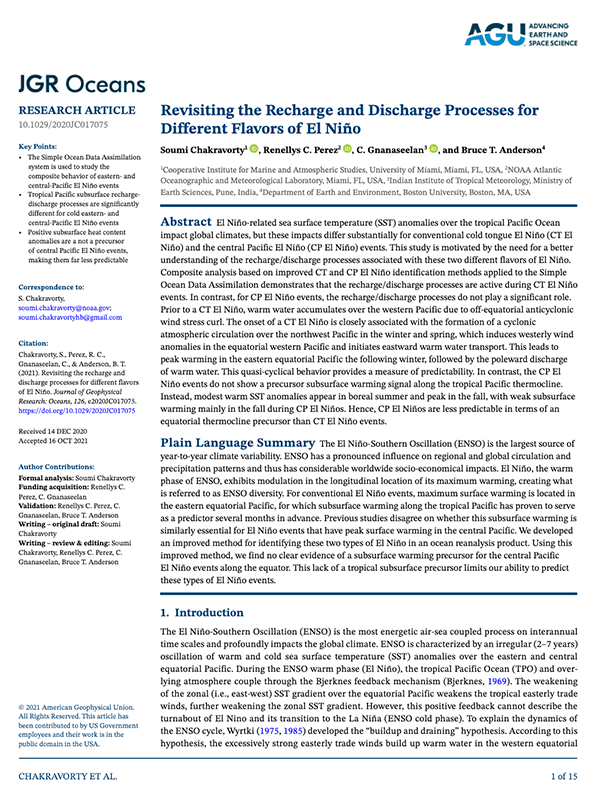Chakravorty, S., Perez, R. C., Gnanaseelan, C., & Anderson, B. T. (2021). Revisiting the recharge and discharge processes for different flavors of El Niño. Journal of Geophysical Research: Oceans, 126(11), e2020JC017075.
Plain Language Summary: The El Niño-Southern Oscillation (ENSO) is the largest source of year-to-year climate variability. ENSO has a pronounced influence on regional and global circulation and precipitation patterns and thus has considerable worldwide socio-economical impacts. El Niño, the warm phase of ENSO, exhibits modulation in the longitudinal location of its maximum warming, creating what is referred to as ENSO diversity. For conventional El Niño events, maximum surface warming is located in the eastern equatorial Pacific, for which subsurface warming along the tropical Pacific has proven to serve as a predictor several months in advance. Previous studies disagree on whether this subsurface warming is similarly essential for El Niño events that have peak surface warming in the central Pacific. The authors developed an improved method for identifying these two types of El Niño in an ocean reanalysis product. Using this improved method, they found no clear evidence of a subsurface warming precursor for the central Pacific El Niño events along the equator. This lack of a tropical subsurface precursor limits our ability to predict these types of El Niño events.
Download Full Paper.
